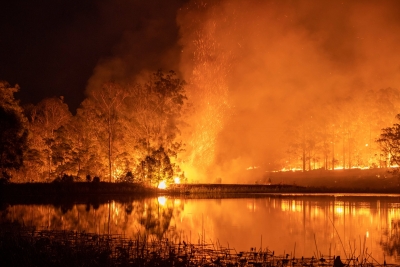
After raging on for several months since the previous year, one of the worst Australian bushfires seasons and wildlife disasters came to an end in March 2020. The season was far worse than any prediction, and according to the BBC, “burned an area of land the size of South Korea”, killing or harming almost three billion animals. The wildfire events for the year did not end there – they have raged on in several regions of the world, destroying different kinds of ecosystems, ranging from tundra to rainforests. The Brazilian Amazon has lost large swathes of rainforests. In just the fire seven months of 2020, more than 13,000 sq.km. burned. The story is the same in the Pantanal wetland region of South America – by September, “fires had charred an estimated 24,000 square kilometers”. The tundra ecosystem of the Arctic region wasn’t spared either – in July and August, “abnormally warm temperatures spawned an intense fire season in eastern Siberia”, according to NASA. When the season waned, it had emitted 244 megatonnes of carbon dioxide. But the worst of all was yet to come – wildfires in the U.S. Even as the eastern part has been pounded by rains, the West has been battling a series of wildfires. By September, across 12 American States, as many as 100 large wildfires have burned 4.6 million acres. These include timber-dominated ecosystems. India too suffered its share of woes hen in May, forest fires in Uttarakhand left nearly 175 acres of land – part of forest ecosystems – destroyed. And today, we’re back to staring at Australia’s bushfire season. Experts say wildfires are a natural part of many ecosystems. But “the scale, intensity, speed, location, and timing of the recent infernos stand out”, perhaps warranting a closer study of global warming.
As wildfires continued to rage in Australia early this year, New South Wales (NSW) officials air-dropped more than 1,500 kg of sweet potatoes and carrots. These were for the endangered brush-tailed rock-wallabies. It is said that this was the largest such food drop ever done in NSW. The move was also important because most of the 15 species of wallabies are endangered. Sharing on social media an image of a wallaby nibbling on a carrot, an Australian minister called the marsupial “One happy customer.”
Picture Credit : Google

